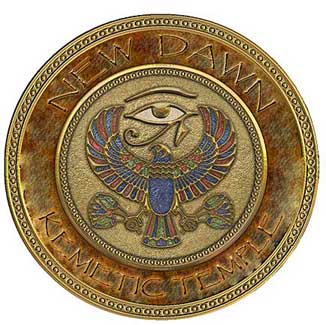|
|
|


~Jimmy Dunn~
The ancient island of Elephantine, opposite modern Aswan
in southern Egypt, was served by several temples dating back from the Ptolemaic
Period to the Early Dynasty Period. Perhaps the most famous of the temples on
the island is the Temple dedicated to the god Khnum, but to the north of this,
behind the museum building there is the site of a small Temple of Satis, which
was only recently restored by the German Archaeological Institute under Dr.
Gunter Dryer. Satis was the consort of Khnum.
This earliest shrine was set in a niche formed by the granite rocks of the cataract
just below the reconstructed temple. Now excavated, this temple dating to the
Early Dynasty Period must be one of the oldest remaining temples in Egypt, though
it is not certain whether Satis was worshipped here. Though no texts has been
discovered, many votive offerings found within the shrine are figures of children
(and also a squatting ape holding it's young), and it has been suggested that
the shrine may have been frequented by mothers either hoping to give birth,
or bringing thanksgiving offerings for a newly born child. Originally, there
was thought to have been a cult image that stood here that was protected by
two small mudbrick rooms, but unfortunately, it is no longer extant. In front
of these rooms was either a courtyard enclosed by more walls, or possibly even
a roofed hall.
By the Old Kingdom, the small shrine had been replaced by a larger court or hall, in the center of which was a pedestal made of layers of mudbrick and matting, with a wooden pole at each corner. This could have been a sort of stand on which to rest a portable tent shrine housing the image of the cult deity.
Among the votive offerings found at the shrine were objects inscribed with the names of a few kings from the 6th Dynasty. Most were plaques bearing the names of Pepi I and Pepi II. Rock inscriptions of the kings Merenre and Pepi II were found on the walls of the niche in which the temple sat.
In the early part of the Middle Kingdom (11th Dynasty), a completely new shrine was built of mudbrick and also carved and painted stonework. In turn, this structure was replaced late in the Middle Kingdom, during the 12th Dynasty, by a temple built completely of stone. Both of these structures were basically extensions of the Old Kingdom temple.
However, in the New Kingdom, a dramatic change took place when the 12th Dynasty stone temple was dismantled and the ancient shrine filled in with blocks of stone to the level of the top of the boulders. The area was then paved over and the 18th Dynasty kings, Hatshepsut and Tuthmosis III, built a new stone temple on top of the old one. However, a shaft in the floor of the new temple built into it's floor connected it with the original shrine below. Hence, to travel down these steps is to descend back into time. This temple was modified and extended through the Greek period.
The main gods of Elephantine were all worshipped in the new temple built mostly by Tuthmosis III, including Khnum, Satis and Anuket. This small temple consists of several rooms and a surrounding gallery. Interestingly, the entrance is located to the right of the front facade of the temple. It communicates with a large hall with two pillars that are decorated with Hathor heads. Within this hall, a doorway on the northern rear wall leads to a chapel dedicated to Amun, while a door on the left of the rear wall leads to other rooms.
The newest, reconstructed temple has carved and painted stone blocks showing mostly Tuthmosis III in front of various members of the Elephantine triad. In some areas where the original blocks are missing (only 500 blocks were recovered), the German team literally drew in missing scenes, though in a very sensitive manner.